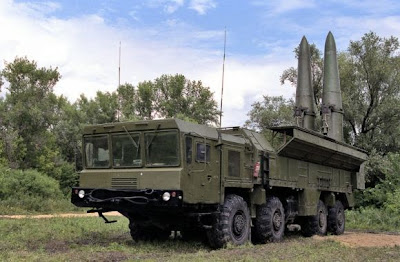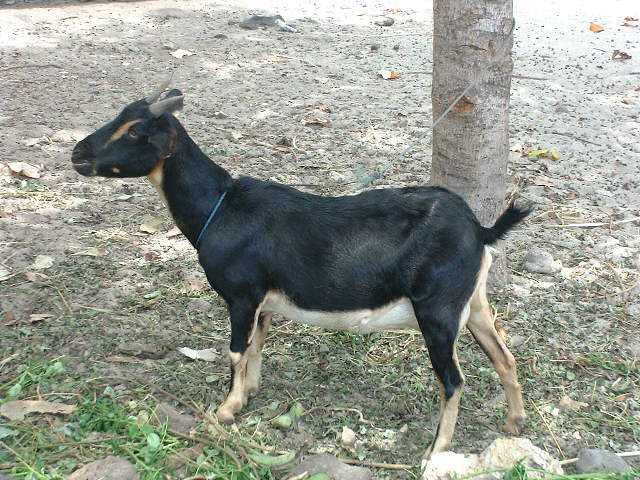
Sistem rudal balistik Iskander-E siap untuk diekspor, menunggu keputusan
otoritas negara Rusia, Valery Varlamov, kepala delegasi Rusia dalam
pameran pertahanan MILEX 2014 di Minsk, Belarus, mengatakan kepada RIA
Novosti, Kamis, 10 Juni 2014.
"Iskander-E (Kode NATO: SS-26 Stone) siap dikirimkan ke negara lain, juga (sistem rudal pertahanan udara) S-400 Triumph ( Kode NATO: SA-21 Growler), tapi otoritas negara harus menyetujuinya terlebih dahulu," kata Varlamov kepada RIA Novosti.
Delegasi Rusia ini mengatakan bahwa negaranya siap mengirimkan sistem rudal balistik Iskander-E untuk negara manapun, tentunya jika ada keputusan seperti dari presiden atau pemerintah.
Beberapa tahun lalu, Kementerian Pertahanan Rusia mengumumkan bahwa sistem rudal pertahanan udara S-400 hanya akan diproduksi untuk kepentingan Rusia. Bahkan seandainya mitra Rusia seperti Belarus dan Kazakhstan menginginkannya, baru bisa menerimanya setelah sistem rudal S-400 melengkapi Rusia, kata Kementerian Pertahanan.
"Selama ini memang belum ada pernyataan di depan publik terkait kemungkinan penjualan sistem rudal Iskander ke negara lain, tetapi dalam prakteknya situasi sama," ujar seorang sumber di kompleks industri militer Rusia mengatakan kepada RIA Novosti.
"Iskander-E (Kode NATO: SS-26 Stone) siap dikirimkan ke negara lain, juga (sistem rudal pertahanan udara) S-400 Triumph ( Kode NATO: SA-21 Growler), tapi otoritas negara harus menyetujuinya terlebih dahulu," kata Varlamov kepada RIA Novosti.
Delegasi Rusia ini mengatakan bahwa negaranya siap mengirimkan sistem rudal balistik Iskander-E untuk negara manapun, tentunya jika ada keputusan seperti dari presiden atau pemerintah.
Beberapa tahun lalu, Kementerian Pertahanan Rusia mengumumkan bahwa sistem rudal pertahanan udara S-400 hanya akan diproduksi untuk kepentingan Rusia. Bahkan seandainya mitra Rusia seperti Belarus dan Kazakhstan menginginkannya, baru bisa menerimanya setelah sistem rudal S-400 melengkapi Rusia, kata Kementerian Pertahanan.
"Selama ini memang belum ada pernyataan di depan publik terkait kemungkinan penjualan sistem rudal Iskander ke negara lain, tetapi dalam prakteknya situasi sama," ujar seorang sumber di kompleks industri militer Rusia mengatakan kepada RIA Novosti.
Iskander adalah salah satu sistem rudal serang yang paling kuat di
negara itu, digunakan oleh Angkatan Darat Rusia. Rudal Iskander
berkemampuan nuklir dan mampu melibatkan berbagai target seperti unit
militer dan pusat-pusat komando bawah tanah musuh.

Sistem rudal Iskander berhasil diujicoba pada tahun 2007. Angkatan Darat Rusia saat ini menggunakan sistem rudal Iskander varian M dan K. Sedangkan Iskander-E adalah versi ekspor, dengan hanya satu roket pada peluncur rudal balistiknya, bukan dua, dan jaraknya hingga 280 km (Iskander-M berjangkauan 400 km). Iskander-E berdimensi panjang panjang 7,3 m, diameter 0,92 m, bobot 3,8 ton dan kecepatan 2.100 m/detik.

Sistem rudal Iskander berhasil diujicoba pada tahun 2007. Angkatan Darat Rusia saat ini menggunakan sistem rudal Iskander varian M dan K. Sedangkan Iskander-E adalah versi ekspor, dengan hanya satu roket pada peluncur rudal balistiknya, bukan dua, dan jaraknya hingga 280 km (Iskander-M berjangkauan 400 km). Iskander-E berdimensi panjang panjang 7,3 m, diameter 0,92 m, bobot 3,8 ton dan kecepatan 2.100 m/detik.
Rudal Iskander juga dibekali kemampuan
untuk menarget ulang targetnya selama penerbangannya, sehingga
memungkinkan
baginya untuk menyerang target-target bergerak (termasuk kapal).
Iskander juga dibekali teknik manuver mengelak yang membuatnya
sulit ditargetkan sistem-sistem pertahanan rudal musuh.
Rudal Iskander-E mampu membawa hulu ledak hingga 700 kg dari beberapa
varietas, dan memiliki probabilitas kesalahan (melingkar) hanya sekitar
lima meter. Senjata yang mematikan untuk lapangan udara, titik-titik
logistik, dan infrastruktur. Laman nationalinterest.org sendiri dalam
sebuah artikelnya menempatkan rudal Iskander sebagai satu dari lima
senjata Rusia yang patut ditakuti oleh NATO.





































